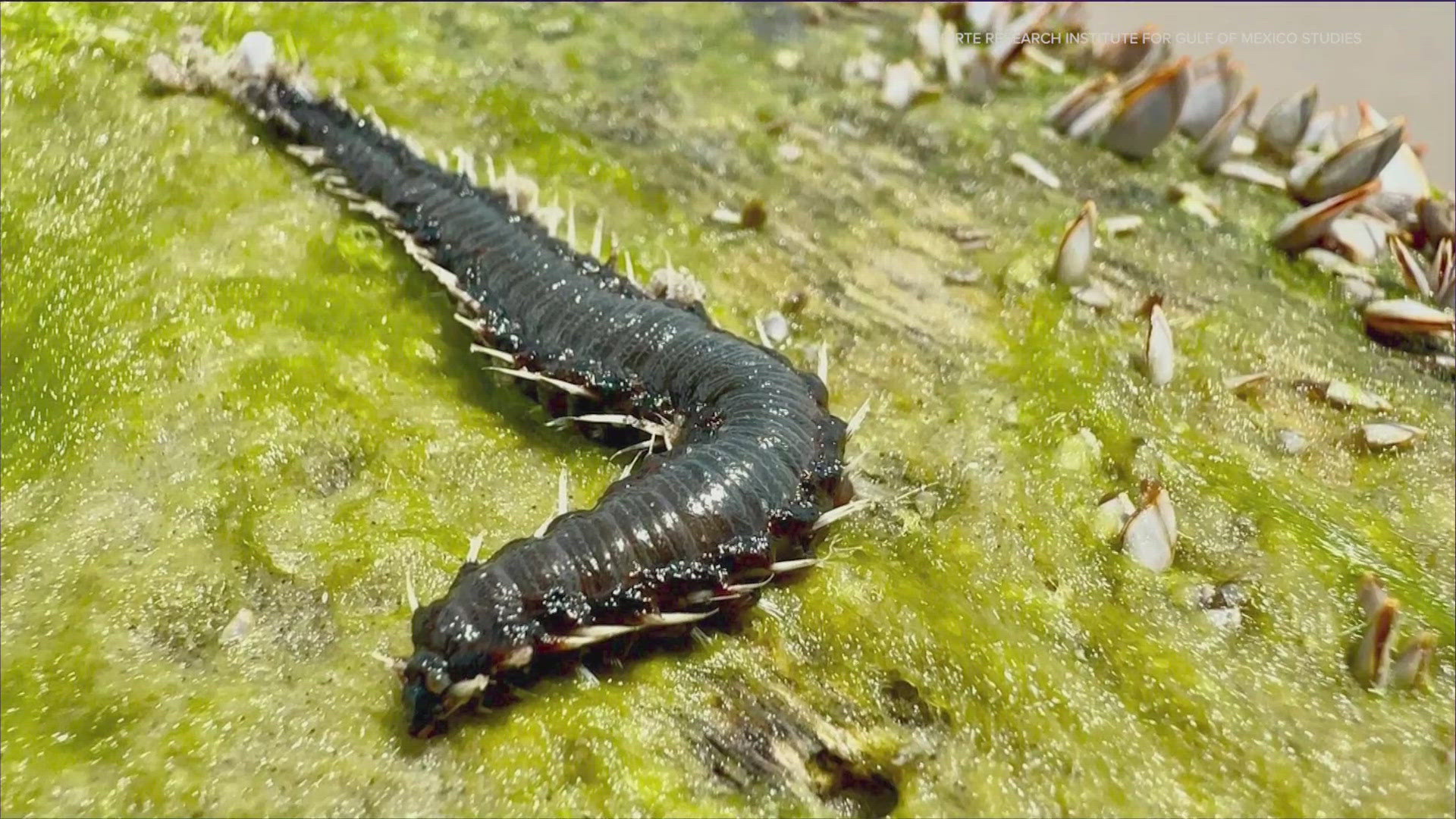CORPUS CHRISTI, Texas — Jace Tunnell has done it again.
If his name sounds familiar it's because the director of community engagement at the Harte Research Institute for Gulf of Mexico Studies at Texas A&M-Corpus Christi has introduced us to a number of unique sea creatures from eel larvae to blue dragons!
Unfortunately, Tunnell, increased our fear and morbid curiosity once more after posting his latest find on social media, the bearded fireworm.
The creature, sometimes called a bristle worm, and scientifically known as belonging to the marine polychaete family, is most commonly known as the fireworm for its burning sting that can last around three hours.
Tunnell happened upon the mean sea worm while doing his weekly beachcomb on Mustang Island and North Padre Island.
"I was actually making a video of gooseneck barnacles and in the process of going around videoing, I was right next to the worm," Tunnell said. "And so, right when I saw it I knew exactly what it was."
Fireworms look almost like a fuzzy caterpillar with hairlike structures that push out along their body. But you do NOT want to touch these hairs! According to Tunnell, they are actually hollow spines full of neurotoxin venom and can stick to your skin very easily.
If you happen to get stung, Tunnell said it is best to get the spines out of the skin using tape. He also suggests putting vinegar or isopropyl alcohol on the wound site after the spines are removed.
The worms are usually found on the sand, rocks and floating objects.
"So if they find these worms I suggest, do not touch them," Tunnell said. "If you have a stick, you can pick it up and put it in water and it totally changes what it looks like. It has gills all over its back that look like fur and then the spines really come out, not only on its back, but for its feet. Other than that, take pictures."
There is a world of sea life to be found on our area beaches, from very large animals like sharks to creatures smaller than a thumbnail, and Tunnell said these creatures have always been here. He said the Harte Research Institute aims to introduce residents to these interesting organisms.
So you'll want to be sure to check out their YouTube channel every Monday at noon. After the fireworm episode airs in mid-September you can look forward to his next find -- sea cockroaches!


More from 3News on KIIITV.com:
- How did Caleb Harris die? Autopsy report reveals few clues
- Corpus Christi resident wins $1 million Powerball Prize
- Erratic driver arrested in Robstown
- CCISD phone policy for the new school year
- Demolition work begins at Sunrise Mall to clear way for new development
- Shrimp boat captain grateful for community support
- Enormous 14-foot hammerhead shark caught in Corpus Christi
Subscribe to our YouTube channel for your daily news and exclusive extended interviews.
Do you have a news tip? Tell 3!
Email tell3@kiiitv.com so we can get in touch with you about your story should we have questions or need more information. We realize some stories are sensitive in nature. Let us know if you'd like to remain anonymous.

